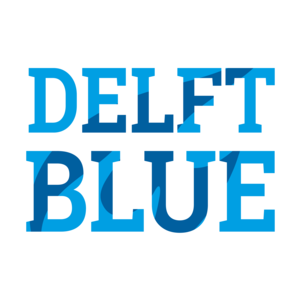Cluster comparison
3 minute read
Cluster comparison
TL;DR
- Most AI training → DAIC.
- Many CPUs / high-memory or MPI jobs → DelftBlue.
- Distributed/experimental systems work → DAS-6.
- Bigger than local capacity or cross-institutional projects → Snellius (via SURF).
- Euro-scale GPU runs → LUMI (EuroHPC via SURF).
- Exascale runs → Jupiter (EuroHPC)
TU Delft clusters
DAIC is one of several clusters accessible to TU Delft CS researchers (and their collaborators). The table below gives a comparison between these in terms of use case, eligible users, and other characteristics.
Tip
- When in doubt, start on DAIC for prototyping. If you hit limits (time-to-solution, memory, scale), graduate to DelftBlue, then Snellius/LUMI.
- TU Delft has other clusters that are not listed here. These tend to be more specialized or have different access requirements.
| System | Best for | Strengths | Use it when | Access & Support |
|---|---|---|---|---|
🎓  | AI/ML training; data-centric workflows; GPU‑intensive workloads | Large NVIDIA GPU pool (L40, A40, RTX 2080 Ti, V100 SXM2); local expert support (REIT and ICT); direct TU Delft storage | Quick iteration, hyper‑parameter sweeps, demos, and almost any workload from participating groups; queues are generally shorter than DelftBlue but limited by available GPUs | Access • Specs • Community |
🎓  | CPU/MPI jobs; high‑memory runs; large per-GPU memory needed; education | Large CPU pool; larger Nvidia GPUs (A100); dedicated scratch storage; local expert support (DHPC, ICT) | Many cores, tightly‑coupled MPI, long CPU jobs, or very high memory per node; education | Access • Specs • Community |
🎓  | Distributed systems research; streaming; edge/fog computing; in-network processing | Multi‑site testbed; mix of GPUs (16× A4000, 4× A5000) and CPUs | Cross‑cluster experiments, network‑sensitive prototypes | Access • Docs • Project |
🇳🇱  | National‑scale runs; larger GPU pools; cross‑institutional projects | Large CPU+GPU partitions (A100 and H100); mature SURF user support; common NL platform | When local capacity/queue limits progress or when collaborating with other Dutch institutions | Access • Docs • Specs |
🇪🇺  | Euro‑scale AI/data; very large GPU jobs; benchmarking at scale | Tier‑0 system with AMD MI250 GPUs (LUMI‑G); high‑performance I/O; strong EuroHPC ecosystem | Beyond Snellius capacity or part of a funded EU consortium / EuroHPC allocation | Access • Docs |
Other EuroHPC resources
In addition to LUMI, TU Delft researchers can also apply for access to other EuroHPC Tier-0/1 systems through EuroHPC Joint Undertaking calls. Examples include:
- Jupiter (Germany): Europe’s first exascale supercomputer, targeting the most demanding HPC and AI workloads.
- Leonardo (Italy): Pre-exascale system with hybrid architecture: a large GPU partition (Nvidia) for AI and a CPU partition for HPC simulations.
- MareNostrum 5 (Spain): Pre-exascale general-purpose system, with Nvidia GPUs.
- MeluXina (Luxembourg): Petascale modular system, suitable for AI, digital twins, quantum simulation, and traditional computational workloads.
- Karolina (Czech Republic): Petascale system for HPC, AI, and Big Data applications.
- Discoverer (Bulgaria): Petascale system focused on simulations and modelling.
These systems complement LUMI and broaden the options for AI, simulation, and large-scale scientific workflows at the European level.
TU Delft cloud resources
For both education and research activities, TU Delft has established the Cloud4Research program. Cloud4Research aims to facilite the use of public cloud resources, primarily Amazon AWS. At the administrative level, Cloud4Research provides AWS accounts with an initial budget. Subsequent billing can be incurred via a project code, instead of a personal credit card. At the technical level, the ICT innovation teams provides intake meetings to facilitate getting started. Please refer to the Policies and FAQ pages for more details.